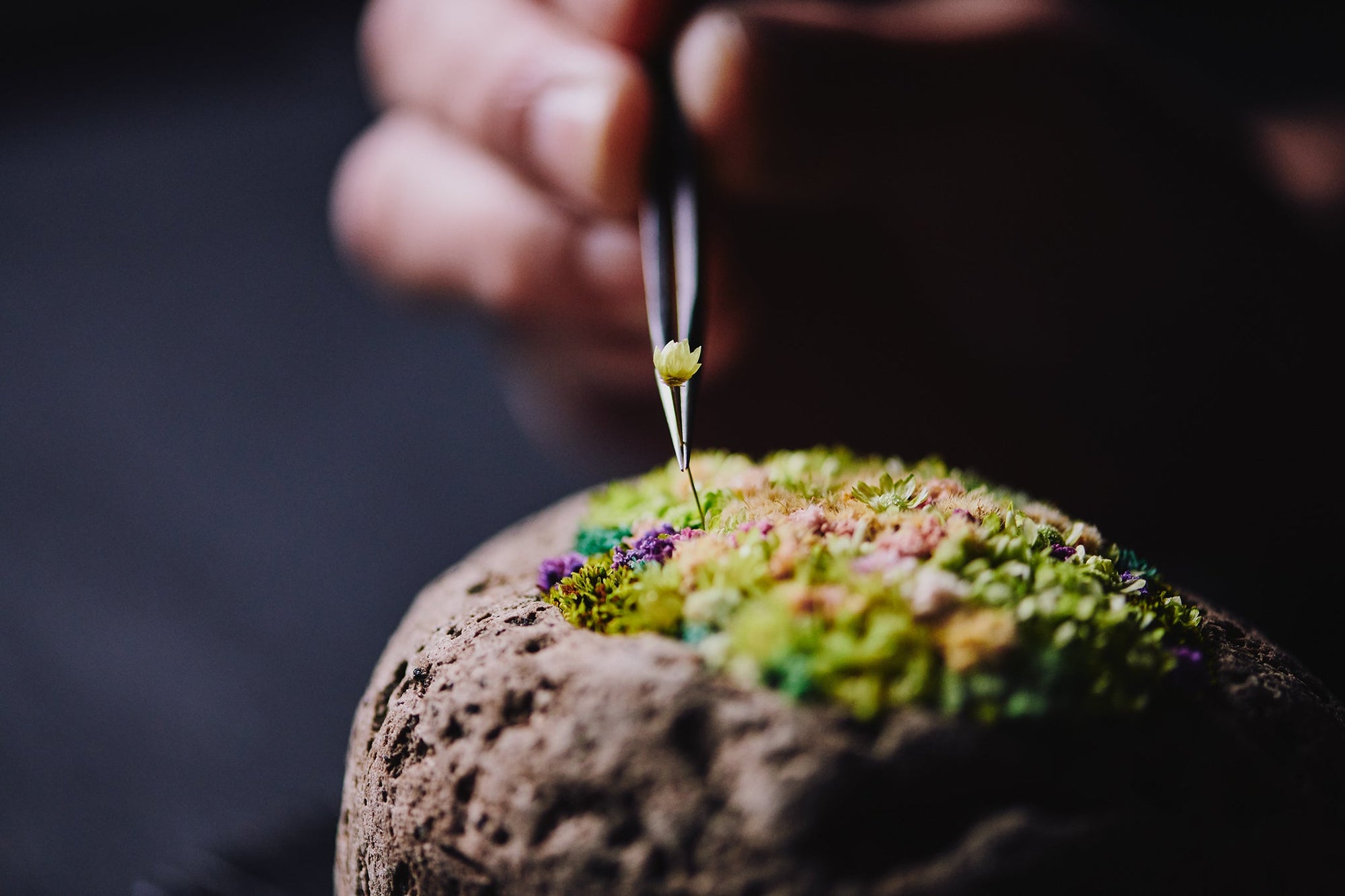
Norihiko Kamei
About Norihiko Kamei <br>Kamei Norihiko's work fuses Japanese aesthetics with a grand view of nature. How does he create such beautiful, mysterious art that seems to capture the beauty of nature in a small world?
Kamei, who has been fond of flower arranging and tea ceremony since her student days, commissioned an original Japanese sweet from the long-established Japanese sweets shop "Toraya" for her graduation project. She said she created a work that "expresses the transience of things that disappear when eaten with beautiful Japanese sweets." "From that time on, I was interested in nature and the never-ending flow of 'impermanence,'" she said, and began to create works using fresh flowers and natural materials in pursuit of the theme of transience and beauty.

About preserved flowers <br>The particularly vibrant preserved flowers used in his signature work, "Hanayama." "I wanted to put myself in a bird's eye view and create a scene that seems possible but doesn't exist," says Kamei as he plants the flowers branch by branch in a jet-black tray. "Whether it's natural flowers blooming in the mountains and fields, fresh flowers sold by growers at the market, or specially processed preserved flowers, all flowers are simply beautiful and ephemeral," says Kamei.
"Wind of the Scenery" is a painting of scenery on a palm-sized "floating stone." The floating stone base was collected from Sakurajima and creates an appealing contrast with the preserved flowers. An original scent wafts faintly from the work in front of you. "My work is a world that seems to exist in this world but does not. What kind of scent would it have in that world? I think the original scent adds depth to this worldview," says the artist, creating a mysterious work in which human intervention and the randomness of nature coexist.

Regarding Kita Kamakura , he says, "I was originally living in Tokyo, but after visiting a friend who lives in Zushi, I started thinking about moving. I like Kita Kamakura because it is close to nature and has a quiet, calm atmosphere. While walking in the nearby forest, I saw the wildflowers blooming bravely and wanted to turn them into a piece of art." As he says, "Tokiyama," a bonsai-style arrangement of wildflowers, beautifully expresses the transience and beauty of nameless flowers that are not available on the market.

From Kamei Norihiko: "Flowers that bloom in the fields and mountains, fresh flowers sold at markets by farmers, and specially processed preserved flowers - all flowers are simply beautiful and fleeting. Taking an artistic approach to turn that beauty into a product and incorporating it into your life. I don't think there's any need for any unnecessary reasons."
For a long time, we have been making efforts to incorporate nature into our lives through bonsai, small gardens, etc. Kamei's work as interior decoration gives us a different sense of the mysticism of nature.




